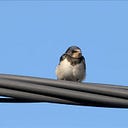Decoding the ABCs of Electrical Cables: A Comprehensive Guide to NYCY, NYY, YJV, and VV Cables
In the field of electrical engineering, the choice of cables is crucial for the seamless transmission of power and data. Among the many options available, NYCY, NYY, YJV, and VV cables are used in a wide range of industries and applications. In this comprehensive guide, ZMS will take an in-depth look at the features, applications, and benefits of these four types of cables, shedding light on their importance in modern infrastructure.
Understanding NYCY Cables
NYCY cables, also known as copper data cables, are designed for indoor installation in dry or moist environments. They feature multiple insulated copper conductors twisted together and encased in a PVC sheath. These cables are commonly used for data transmission in telecommunication networks, CCTV systems, and building automation systems. Their robust construction and high data transmission capabilities make them indispensable in modern communication infrastructure.
Exploring NYY Cables
NYY cables are heavy-duty power cables designed for outdoor use and direct burial applications. They consist of stranded copper conductors insulated with PVC and a PVC outer sheath. NYY cables are known for their excellent resistance to moisture, sunlight, and mechanical stress, making them ideal for underground power distribution, street lighting, and industrial installations. Their durability and reliability ensure uninterrupted power supply even in harsh environmental conditions.
Unraveling YJV Cables
YJV cables, also referred to as XLPE insulated power cables, are designed for medium to high-voltage applications. They feature copper or aluminum conductors insulated with cross-linked polyethylene (XLPE) and a PVC or PE outer sheath. YJV cables offer superior thermal and electrical properties, making them suitable for power transmission and distribution in utility grids, substations, and industrial plants. Their ability to withstand high temperatures and voltage fluctuations ensures efficient and reliable operation in demanding environments.
Diving into VV Cables
VV cables, short for PVC-insulated PVC sheathed cables, are versatile cables used for various electrical applications. They consist of stranded copper conductors insulated with PVC and a PVC outer sheath. VV cables are commonly used for indoor wiring, electrical distribution panels, and residential installations. Their flexibility, ease of installation, and cost-effectiveness make them a preferred choice for both commercial and residential projects.
Comparing Characteristics and Applications
While NYCY, NYY, YJV, and VV cables serve distinct purposes, they share some common characteristics and applications:
Weather Resistance
NYY and YJV cables are designed to withstand harsh environmental conditions, including moisture, sunlight, and temperature extremes, making them suitable for outdoor installations.
Insulation Material
PVC is the most commonly used insulation material for NYCY, NYY, and VV cables, offering good electrical properties and mechanical strength. In contrast, XLPE insulation in YJV cables provides enhanced thermal stability and resistance to aging.
Voltage Rating
YJV cables are designed for medium to high voltage applications, typically ranging from 1 kV to 35 kV, whereas NYCY, NYY, and VV cables are used in low voltage applications up to 1 kV.
Installation Environment
NYCY cables are primarily used indoors or in protected outdoor environments, while NYY cables are suitable for direct burial and outdoor installations. YJV and VV cables are versatile and can be used in various indoor and outdoor applications.
Advantages and Considerations
Each type of cable offers unique advantages and considerations:
NYCY cables provide high-speed data transmission and are suitable for indoor applications requiring reliable communication networks.
NYY cables offer robust construction and weather resistance, making them ideal for outdoor power distribution and underground installations.
YJV cables feature superior electrical properties and thermal stability, making them suitable for medium to high voltage power transmission.
VV cables are cost-effective, easy to install, and versatile, making them a popular choice for general electrical wiring and residential applications.
In the ever-evolving landscape of electrical engineering, the selection of cables plays a pivotal role in ensuring the efficiency, reliability, and safety of electrical systems. From the data highways of NYCY cables to the rugged reliability of NYY cables and the high-voltage prowess of YJV cables, each type serves a distinct purpose in powering our modern world. By understanding the characteristics, applications, and advantages of NYCY, NYY, YJV, and VV cables, engineers and installers can make informed decisions to meet the diverse needs of infrastructure projects across industries.
